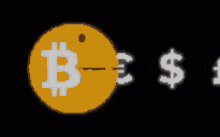Posted on February 23, 2025
Currency Supply, Cryptocurrency, and Blockchain: A Deep Dive into the Digital Money Revolution
Let’s dive into the fascinating world of currency supply, cryptocurrency, and blockchain. These concepts are deeply interconnected, and understanding them requires breaking things down step by step. I’ll explain each one clearly and in detail, weaving them together so you see the bigger picture.
Currency Supply
Currency supply refers to the total amount of money available in an economy at a given time. In traditional systems, like fiat currencies (e.g., the U.S. dollar or the Euro), this is controlled by central banks, such as the Federal Reserve or the European Central Bank. They can increase the supply by printing more money or decrease it through monetary policies like raising interest rates or selling bonds. The supply isn’t just physical cash—it also includes digital money in bank accounts, often categorized into measures like M1 (cash and checking accounts) and M2 (savings accounts and other near-money assets).
The key thing here is control: central banks decide how much currency exists based on economic goals like managing inflation, unemployment, or growth. But this centralized power can lead to issues—overprinting can devalue money (think hyperinflation in places like Zimbabwe), and it relies on trust in the government or bank.
Cryptocurrency
Now, cryptocurrency flips this model on its head. It’s a digital or virtual form of money that uses cryptography—secure coding techniques—to control its creation and verify transactions. Unlike fiat currency, most cryptocurrencies aren’t controlled by any central authority. Bitcoin, the first and most famous cryptocurrency, was created in 2009 by someone (or a group) under the pseudonym Satoshi Nakamoto. Others, like Ethereum, Ripple (XRP), and thousands more, followed.
The currency supply in cryptocurrencies is typically governed by rules hardcoded into their systems. For example:
-
Bitcoin has a fixed supply cap of 21 million coins. New bitcoins are released gradually through a process called mining (more on that soon), and this issuance halves roughly every four years in an event called the “halving.” By around 2140, no new bitcoins will be created, making it a deflationary asset.
-
Ethereum originally had no strict cap, but after shifting to a proof-of-stake system in 2022, its supply dynamics changed—some ether is even burned (removed from circulation) with each transaction, potentially making it deflationary over time.
-
Stablecoins like Tether (USDT) peg their value to fiat (e.g., 1 USDT = 1 USD) and adjust supply to maintain that peg, often backed by reserves.
The big idea? Cryptocurrency supply is predictable and transparent, dictated by code rather than human whim. This removes the need to trust a central bank, but it also means supply can’t be tweaked to respond to economic crises—Bitcoin won’t print more to stimulate a recession.
Blockchain
So, how does cryptocurrency work without a central authority? Enter blockchain—the tech backbone that makes it possible. A blockchain is a decentralized, digital ledger that records transactions across a network of computers (nodes). Think of it as a public spreadsheet that everyone can see and verify, but no one can tamper with.
Here’s how it works:
-
Transactions: When you send cryptocurrency (say, 1 Bitcoin), that transaction is broadcast to the network.
-
Blocks: Transactions are grouped into a “block.” Miners (in proof-of-work systems like Bitcoin) or validators (in proof-of-stake systems like Ethereum 2.0) compete to solve complex math problems or stake their own coins to confirm the block’s validity.
-
Chain: Once verified, the block is added to the chain of all previous blocks—hence “blockchain.” Each block has a unique code (a hash) linking it to the one before, making it nearly impossible to alter past records without redoing the entire chain.
-
Decentralization: Copies of the blockchain are stored on thousands of computers worldwide. No single entity controls it—if one node goes down, the network keeps running.
Blockchain ensures cryptocurrency supply stays in check. For Bitcoin, the mining reward (new coins given to miners) is part of the code, and the 21-million cap is enforced by the protocol. If someone tried to fake more coins, the network’s consensus rules would reject it—every node checks the math.
Tying It Together
-
Currency Supply in Crypto: Unlike fiat, where supply is fluid and centrally managed, crypto supply is often fixed or algorithmically determined. Bitcoin’s scarcity mimics gold (hence “digital gold”), while Ethereum’s flexibility supports a broader ecosystem of apps.
-
Cryptocurrency’s Role: It’s money without middlemen. You don’t need a bank—just a wallet and an internet connection. But its value swings wildly because supply doesn’t adjust to demand like fiat does.
-
Blockchain’s Magic: It’s the trust machine. By making every transaction public, permanent, and verifiable, it replaces bankers with code. This transparency governs supply and prevents double-spending (using the same coin twice).
Real-World Example
Imagine Bitcoin’s supply: As of February 23, 2025, about 19.6 million bitcoins are in circulation (out of 21 million). Miners earn 3.125 BTC per block (post-2024 halving), adding roughly 450 BTC daily. This slow drip is predictable—contrast that with the U.S. Federal Reserve, which pumped trillions into the economy during COVID-19, a move no one could fully predict or audit in real-time.
Challenges and Nuances
-
Scalability: Blockchains like Bitcoin process transactions slowly (7 per second vs. Visa’s 24,000). Newer chains like Solana tackle this but trade off some decentralization.
-
Energy: Mining Bitcoin uses massive electricity—think small-country levels—because of proof-of-work.
-
Regulation: Governments can’t control crypto supply directly, but they can ban or tax it, affecting its use.
In short, cryptocurrency reimagines currency supply as a fixed or rule-based system, powered by blockchain’s decentralized trust. It’s a radical shift from centralized fiat—less flexible, more transparent, and a wild experiment still unfolding. What do you think about this setup—any part you’d like to explore more?





 Bitcoin
Bitcoin  Ethereum
Ethereum  Tether
Tether  XRP
XRP  Dogecoin
Dogecoin  Bitcoin Cash
Bitcoin Cash  Zcash
Zcash  Monero
Monero  Litecoin
Litecoin  Wrapped SOL
Wrapped SOL  PAX Gold
PAX Gold